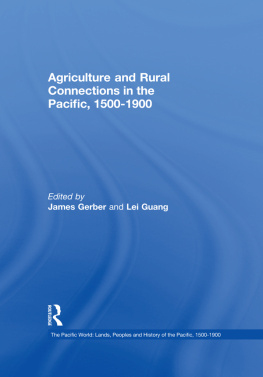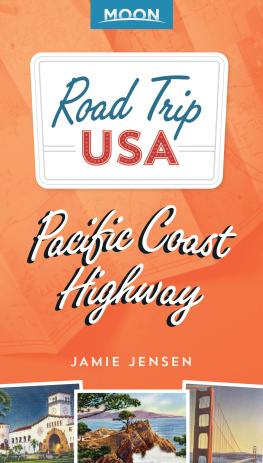Thomas R. Cox - Mills and Markets: A History of the Pacific Coast Lumber Industry to 1900
Here you can read online Thomas R. Cox - Mills and Markets: A History of the Pacific Coast Lumber Industry to 1900 full text of the book (entire story) in english for free. Download pdf and epub, get meaning, cover and reviews about this ebook. City: Seattle, year: 2017, publisher: University of Washington Press, genre: History. Description of the work, (preface) as well as reviews are available. Best literature library LitArk.com created for fans of good reading and offers a wide selection of genres:
Romance novel
Science fiction
Adventure
Detective
Science
History
Home and family
Prose
Art
Politics
Computer
Non-fiction
Religion
Business
Children
Humor
Choose a favorite category and find really read worthwhile books. Enjoy immersion in the world of imagination, feel the emotions of the characters or learn something new for yourself, make an fascinating discovery.

- Book:Mills and Markets: A History of the Pacific Coast Lumber Industry to 1900
- Author:
- Publisher:University of Washington Press
- Genre:
- Year:2017
- City:Seattle
- Rating:3 / 5
- Favourites:Add to favourites
- Your mark:
- 60
- 1
- 2
- 3
- 4
- 5
Mills and Markets: A History of the Pacific Coast Lumber Industry to 1900: summary, description and annotation
We offer to read an annotation, description, summary or preface (depends on what the author of the book "Mills and Markets: A History of the Pacific Coast Lumber Industry to 1900" wrote himself). If you haven't found the necessary information about the book — write in the comments, we will try to find it.
Mills and Markets: A History of the Pacific Coast Lumber Industry to 1900
Thomas R. Cox: author's other books
Who wrote Mills and Markets: A History of the Pacific Coast Lumber Industry to 1900? Find out the surname, the name of the author of the book and a list of all author's works by series.
Mills and Markets: A History of the Pacific Coast Lumber Industry to 1900 — read online for free the complete book (whole text) full work
Below is the text of the book, divided by pages. System saving the place of the last page read, allows you to conveniently read the book "Mills and Markets: A History of the Pacific Coast Lumber Industry to 1900" online for free, without having to search again every time where you left off. Put a bookmark, and you can go to the page where you finished reading at any time.
Font size:
Interval:
Bookmark:
The Emil and Kathleen Sick Lecture-Book Series in Western History and Biography
A History of the Pacific Coast Lumber Industry to 1900
By Thomas R. Cox

Copyright 1974 by the University of Washington Press
Printed in the United States of America
All rights reserved. No part of this publication may be reproduced or transmitted in any form or by any means, electronic or mechanical, including photocopy, recording, or any information storage or retrieval system, without permission in writing from the publisher.
Library of Congress Cataloging in Publication Data
Cox, Thomas R1933
Mills and markets.
(The Emil and Kathleen Sick lecture-book series in western history and biography)
Bibliography: p.
1. Lumber tradePacific CoastHistory. 2. SawmillsPacific CoastHistory. I. Title. II. Series.
HD9757.A5C69338.47674097974-9505
ISBN 0-295-95349-7
For MARY, who made it all possible
UNDER the provisions of a Fund established by the children of Mr. and Mrs. Emil Sick, whose deep interest in the history and culture of the American West was inspired by their own experience in the region, distinguished scholars are brought to the University of Washington to deliver public lectures based on original research in the fields of Western history and biography. The terms of the gift also provide for the publication by the University of Washington Press of the books resulting from the research upon which the lectures are based. This book is the second volume in the series.
LONG before permanent title to the area had been established, enterprising Europeans and Americans had commenced harvesting and sawing into lumber the forest resources that stretch along the Pacific coast of North America. Shipping their cut by sea, they found widely scattered outlets for the product of their labors. From these embryonic beginnings a major industry evolved. By the 1880s it had assumed vast dimensions and exerted widespread influence. However, as a writer for the San Francisco Journal of Commerce noted, few realized its importance. Even in San Francisco, gateway to one of the coastal lumber industrys main markets and the center from which it was controlled, the industry presented an unimpressive front; but these piles of lumber, these modest little coops of offices represent thousands upon thousands of acres of land, millions upon millions of capital... [and] employment to... hands all the way from Santa Cruz on the south to Alaska on the north. This anonymous observer was correct in his assessment of both the importance of the industry and the publics failure to recognize it. It is a failure that has been widely shared since.
Throughout their history the cargo millsas the sawmills that produced lumber for this sea-based trade were knownserved as more than just a source of employment and of building materials for the Far West. Collectively, they encouraged the permanent settlement of sizable areas bypassed by miners and agriculturists, produced one of the West Coasts leading exports, and, through this, drew money into a region that, for all its wealth in precious metals, was short on investment capital.
Like any industry, the coastal lumber industry was influenced by what transpired in the scattered realms that were its major markets: San Francisco and its hinterlands, southern California, Latin America, Hawaii, Australia, and China. Indeed, the cargo mills were often more affected by what transpired in the lands of the Pacific Basin than by what was taking place in other parts of the United States. The discovery of mineral deposits in Australia and their subsequent exploitation, the building of railroads in North China, and the rise of plantation agriculture in Hawaii had a great impact on them; the Civil War, relatively little. Not until long after the completion of the transcontinental railroads did the industry turn to the area east of the Cascades and Sierra Nevada as the major outlet for its cut; only then did mills of the Pacific Coast come to be more a part of the economy of the United States than that of the Pacific Basin.
The coastal lumber industry grew to maturity in the age of enterprise, a period that saw many another industry become both larger and increasingly more oligopolistic. But no John D. Rockefeller, no Standard Oil emerged to bring order into the chaos that was the uncertain, highly competitive world of the cargo mills. Then, and in years to come, the lumber industry remained fragmented, perhaps the most purely competitive of any major industry in the United States. To be sure, lumbermen repeatedly took steps that in other fields led to trusts and other forms of combination, but their efforts brought neither order nor lasting combination to the cargo trade. Too many factors were working in the opposite direction: the scattered resource base upon which the mills drew; the ease of entry into the business; the body of federal land laws that, for all its failures, made the erection of an effective timber monopoly nearly impossible; and, perhaps too, the absence of leaders with that peculiar combination of characteristics possessed by Rockefeller and his ilk.
Though the failure of centralization set it apart, the coastal lumber industry underwent many changes that closely paralleled developments in other areas of industrial enterprise. Firms integrated their holdings both vertically and horizontally, expanded and modernized their plants to remain competitive, and sought new markets and new products that would give them an advantage over rivals. Since they marketed their cut by sea, the cargo mills adjusted not only to technological changes in logging and sawmilling, but to those in marine transportation as well. Entrepreneurial leadership played a vital role in determining which firms prospered. Those who rose to prominence were not always those with the greatest knowledge of lumbering. Sometimes, as in the case of Asa Mead Simpson, a leader emerged whose expertise lay more at sea than in the woods or mills. But, whether advantage was gained ashore or at sea, it seems clear that those firms that prospered did so not just because they were the largest and financially soundest (in their early years they often were not), but because of the quality of leadership they enjoyed.
The coastal lumber industry was never made up solely of large and successful firms. There was a host of small, marginal operations; numerous mills failed for every one that grew large and prospered. Sawmills appeared on tiny, inhospitable ports, among sparse stands, and on cutover lands as well as in the more promising areas around Puget Sound, Coos and Humboldt bays, and Grays Harbor. What the smaller, less successful firms did had its impact on the larger. The history of the Pacific Coast lumber industry is the history of both.
Much has been written on the lumber industry of the Far West. But, although there have been studies of individual companies and areas of production, as yet no history of the cargo trade in its entirety has appeared. This book is designed to fill that void: it both synthesizes the earlier, more narrowly focused studies and goes beyond them. It investigates important aspects of the cargo trade that have not been analyzed previously, such as the market forces operating in the various outlets where the cut of the cargo mills was sold, the tiny mills on the more remote and inhospitable anchorages of the Pacific coast, and the maritime aspects of this seaborne trade.
Next pageFont size:
Interval:
Bookmark:
Similar books «Mills and Markets: A History of the Pacific Coast Lumber Industry to 1900»
Look at similar books to Mills and Markets: A History of the Pacific Coast Lumber Industry to 1900. We have selected literature similar in name and meaning in the hope of providing readers with more options to find new, interesting, not yet read works.
Discussion, reviews of the book Mills and Markets: A History of the Pacific Coast Lumber Industry to 1900 and just readers' own opinions. Leave your comments, write what you think about the work, its meaning or the main characters. Specify what exactly you liked and what you didn't like, and why you think so.





